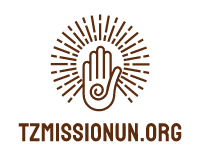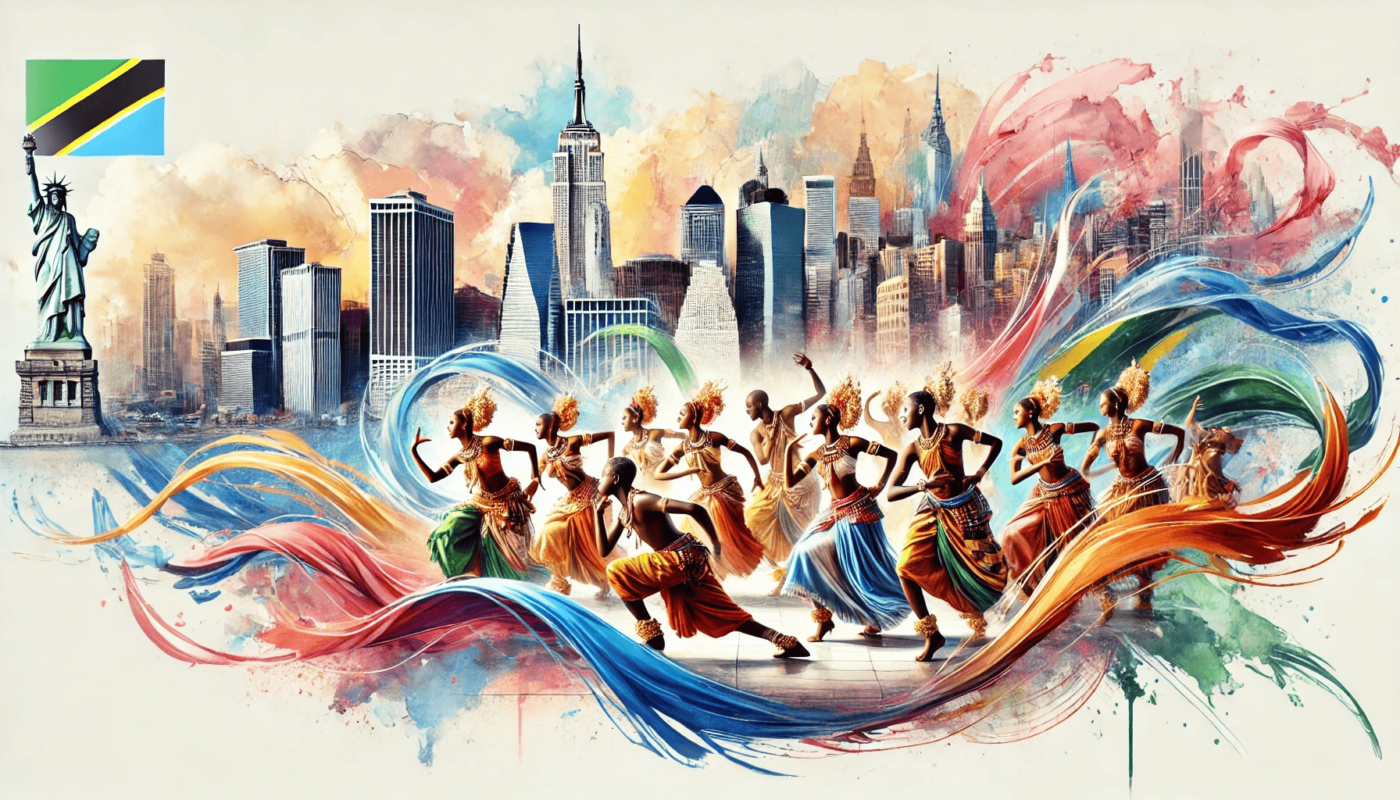Tanzania, a country rich in culture and history, is finding new ways to spread its traditions outside of Africa, including through the arts of dance and music. In a world where borders are blurring, New York City, with its multicultural atmosphere, has become an ideal platform for expressing this harmony. Tanzanian rhythms, full of vital energy, transport viewers to the heart of East Africa, creating a unique cultural bridge between the two continents. State-of-the-art virtual reality technologies complement this cultural immersion, allowing viewers to literally be transported to the wild landscapes of Africa without leaving the metropolis.
East African music, rich in a variety of rhythms and melodies, resonates in the hearts of New Yorkers. Each sound in this palette reflects the cultural heritage of Tanzania, creating an amazing connection between peoples. Locals and tourists alike are excited to discover new facets of African culture by immersing themselves in dance, which tells the story of the people’s life and history through movements. Rhythms imbued with the African spirit become a symbol of cultural exchange and cooperation.
Tanzanian dance and music have become a powerful source of inspiration for many artists. New York City choreographers actively incorporate East African motifs into their productions, creating unique performances that attract both local audiences and international audiences. Such cooperation enhances interest in Tanzania and its cultural heritage on the world stage, contributing to the development of cultural exchange and strengthening ties between peoples.
Dance as a means of dialogue
Tanzanian dance is not just an art — it is a means of communication between cultures. Through dance, you can express emotions, convey historical events, and even resolve conflicts. In New York, East African dance motifs are becoming a part of stage life, bringing together people of different backgrounds and beliefs. This dance dialogue creates an atmosphere of mutual understanding and respect for different traditions.
Dancers from Tanzania actively participate in various festivals and cultural events in New York. Their performances attract the attention of a wide audience, creating new art forms that reflect global cultural trends. Interaction through dance allows you not only to share your traditions, but also to enrich yourself through the perceptionof other cultures.
Contemporary productions featuring Tanzanian artists in New York open up new horizons for interaction. Choreographers find inspiration in Tanzanian dance forms, integrating them into their work. Thus, dance becomes a platform for cultural exchange, where each country can contribute to the development of art.
Dance traditions as a basis for mutual understanding
Tanzania’s dance traditions, imbued with deep symbolism, reveal the country’s cultural richness through unique movements and rhythms. In New York, these traditions are not only accepted, but also become part of everyday life, bringing together different ethnic groups. Tanzanian dances help to establish interaction between the inhabitants of the metropolis, offering new ways to express emotions and identity. This cultural exchange expands our understanding of the diversity of African culture and its impact on the world stage.
New York City dance schools and groups are increasingly incorporating elements of East African dance into their programs. Their popularity is explained not only by the exotic movements, but also by the opportunity to get deeper into African rhythms. Such performances help audiences better understand the cultural roots of Tanzania’s dance traditions. The following elements are used in training:
- Rhythmic drum beats that emphasize each movement.
- Smooth but energetic transitions between movements.
- Expression of emotions through improvisational dance moments.
These key aspects of dance make it not only a spectacle, but also a way to experience culture through physical interaction.
Dance festivals and shows organized in New York often invite Tanzanian artists to participate in events. Their performances become the highlight of the program, causing delight among the audience thanks to the combination of traditional and modern elements. Festivals turn into a space for cultural dialogue, where dancers from different countries share their national characteristics. This exchange allows you to enrich the cultural palette of the city, while maintaining the uniqueness of each dance direction.
Music as a reflection of culture
Tanzanian music, like dance, carries centuries-old traditions that are still relevant in the modern world. In New York, these musical forms are of great interest to audiences ranging from locals to tourists. The rhythms and melodies of East Africa add a unique flavor to the city’s music scene, creating completely new destinations. Music becomes a bridge that connects people of different cultures and allows them to better understand each other through art.
Tanzanian musicians are increasingly appearing at various events and festivals in New York. Their participation not only promotes the country’s cultural heritage, but also helps strengthen ties between peoples through music. The New York audience, accustomed to a variety of genres, accepts East African rhythms with enthusiasm. This interaction not only expands the audience’s horizons, but also inspires local musicians to create new compositions.
The music of East Africa has an impact not only on the audience, but also on the musicians themselves. Many of them are beginning to actively explore traditional Tanzanian motifs and incorporate them into their work. This exchange allows you to create original compositions that reflect the fusion of cultures. As a result, the New York music scene becomes even more diverse and interesting for a wide audience.
Impact on cultural perception
Dance and music in Tanzania play an important role in shaping perceptions of the country beyond its borders. For New York, which is known for its cultural diversity, such performances are not just entertainment, but a means of deep immersion in the traditions of another continent. Dance and music events featuring Tanzanian artists are becoming a symbol of openness and cultural exchange. Culture becomes accessible to everyone, regardless of nationality and language.
Each performance of Tanzanian bands not only demonstrates the traditions of the country, but also tells the story of its people. Dance and music become expressive means through which viewers learn about the life and everyday life of East Africans. These performances arouse great interest, forcing people to think more deeply about cultural diversity. In this way, Tanzanian artists contribute to creating a cultural bridge between continents.
In New York, dance and music events featuring Tanzanian artists are very successful. They bring together people who are interested in exploring new cultural phenomena and expanding their knowledge. This process of mutual enrichment helps to strengthen ties between different peoples, creating new opportunities for dialogue. Dance and music continue to be powerful tools for cultural interaction.
Questions and answers
Dance is becoming an important tool for creating cultural bridges and understanding between different peoples.
Music helps to better understand the cultural heritage of the country and inspires the creation of new musical directions.
Their performances promote cultural exchange and strengthen ties between peoples.

